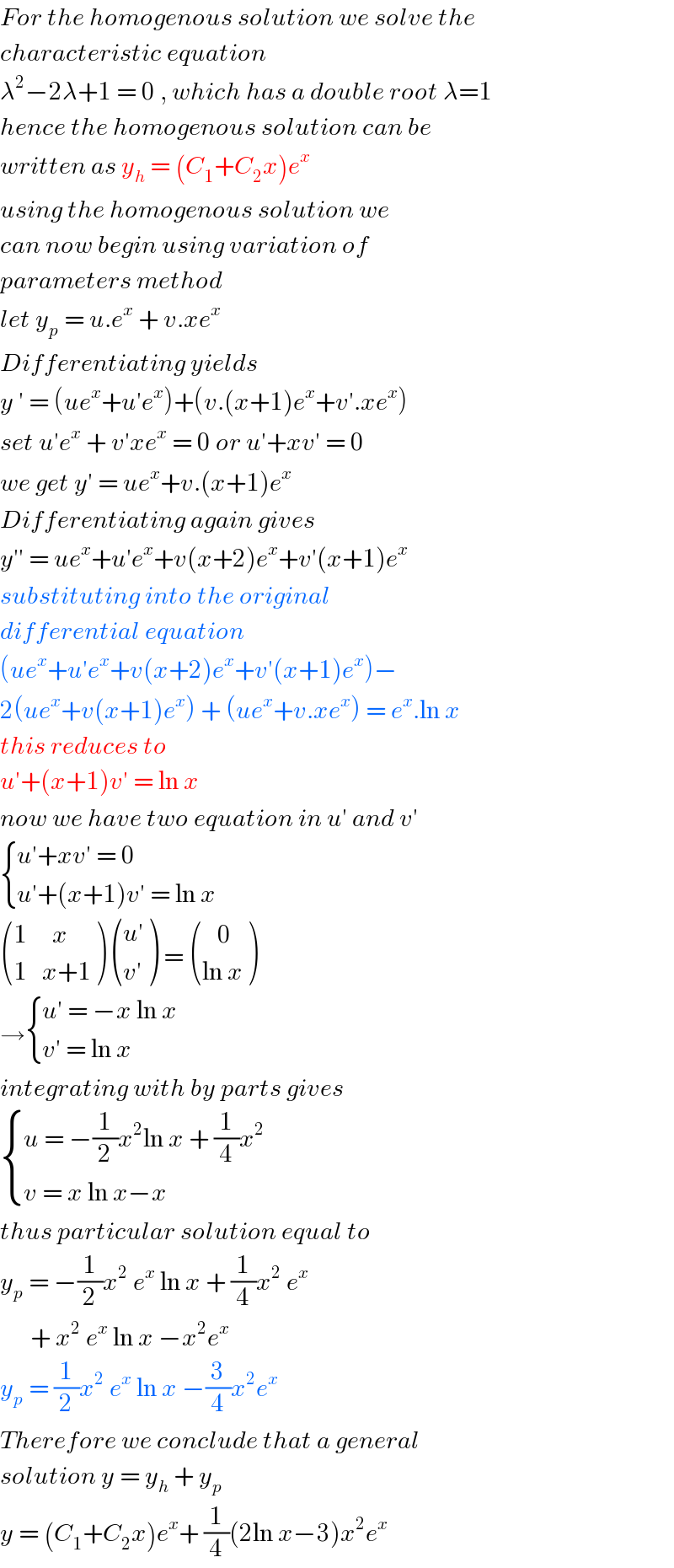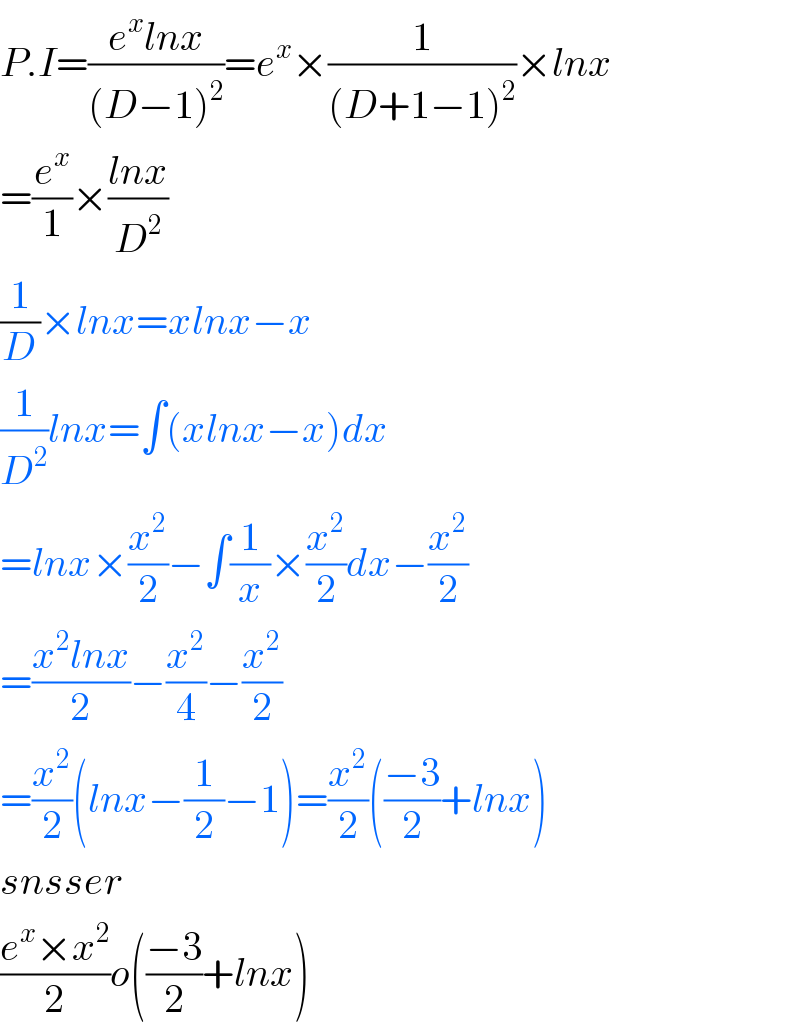
Question and Answers Forum
Previous in Differential Equation Next in Differential Equation
Question Number 119065 by benjo_mathlover last updated on 21/Oct/20

Answered by Olaf last updated on 22/Oct/20

Commented by benjo_mathlover last updated on 22/Oct/20

Answered by john santu last updated on 27/Oct/20

Answered by TANMAY PANACEA last updated on 22/Oct/20

